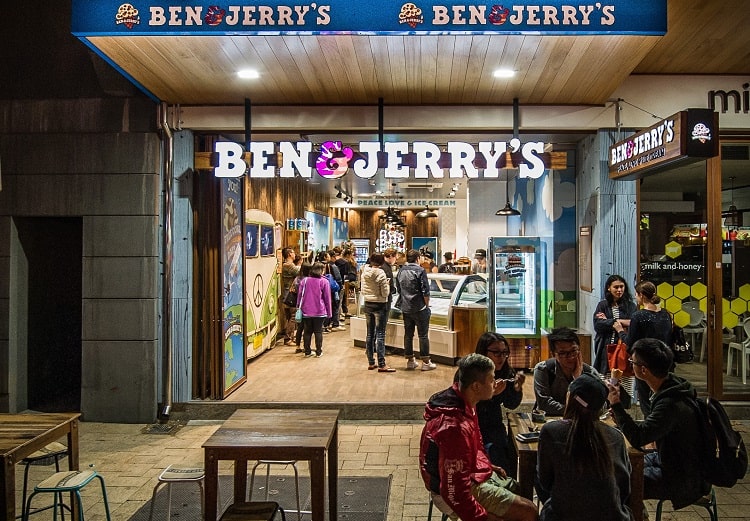Who doesn’t like ice cream……not many people I know don’t love to treat themselves to an ice cream on a warm summer day. When I first approached Sean Farrell (National Retail Manager ANZ) for Ben & Jerry’s he was already familiar with the work Geotech had done with Retail Food Group for the Donut King brand in early 2018.
For those that aren’t familiar with the iconic Ben & Jerry’s brand, it was founded in 1978 in Burlington Vermont USA by Ben & Jerry. In 2000, the brand was acquired by Unilever who saw it as a great extension of the Unilever family whose values & social causes aligned with Unilever.
Sean’s mission is to grow the popular brand in Australia & New Zealand- however, unlike some brands in the market, the growth has to be considered & sustainable for everyone involved. This is particularly true for Ben & Jerry’s and potential franchisees. The franchisee has to align with the brands social & environmental foot print. Some of these include
- Use of Fair Trade ingredients
- Engaging the community through community based projects
- Grass roots organizing for social change
- The National movement building grant program
- Corporate philanthropy
- The employee matching gift program
The market is also crowded, there is now a multitude of ice cream, yogurt, gelato and dessert brands poping up everywhere. Given most of these are impulse driven, they rely heavily on volume of foot traffic past the door, and great positioning within the retail precinct to stand out from the crowd.
Geotech has worked with many of the leading food brands in Australia & SE Asia and we have seen how this category has evolved over time. Think of Starbucks for example, their business has evolved over time and has experienced an increase in demand for flavoured, milk & ice cream based cold beverages. The Australian palate has changed dramatically over the past 10+ years, and the smart operators have come to realise diversification & the ability to pivot a business is now essential to stay relevant in todays market.
When we first started working with Sean and the team, our priority was to analyse the existing network of stores to determine the key sales drivers for the brand. In other words, what characteristics made the better performing stores perform better, then learn from the process and apply the learnings to future store growth opportunities. Once we identified the key sales drivers, we were able to build a benchmarking tool to forecast the sales potential for any new store of interest. It also enables us to apply the tool to existing stores and make considered recommendations on how to improve store performance.
The last part of the project was to develop a strategic network plan, prioritising new sites based on the key findings from the study. This has allowed Sean & his team to become more proactive in being able to brief prospective landlords/leasing agents on where they want to be, not getting bombarded with sites that now clearly don’t fit the optimum profile for their brand.
We are now in discussions with Ben & Jerry’s to provide some research & analysis for other countries that the brand operate within. Working with Ben & Jerry’s has also provided the brand with even greater insight into the importance of looking at site specific characteristics and not just residential demographics when assessing new site opportunities.

